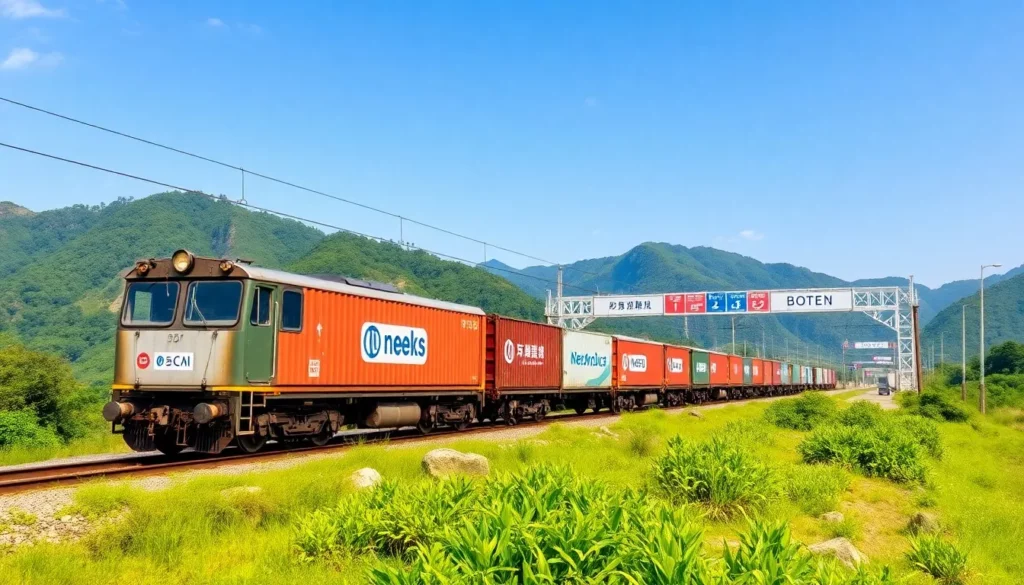Successfully shipping from China to Laos requires a strategic understanding of the unique transportation landscape connecting these two nations. For B2B importers, the key is to navigate the groundbreaking railway infrastructure, established road networks, and optimized air freight connections. A well-planned approach is essential for achieving cost-effective and reliable logistics solutions.
The China-Laos trade relationship has been transformed by modern infrastructure and free trade agreements. The ASEAN-China Free Trade Area (ACFTA) and the Regional Comprehensive Economic Partnership (RCEP) can reduce your import duties by up to 90% on qualifying goods.
Critical Warning: Failing to obtain the correct Certificate of Origin (Form E or Form RCEP) can result in you paying full tariff rates, significantly increasing your landed costs.
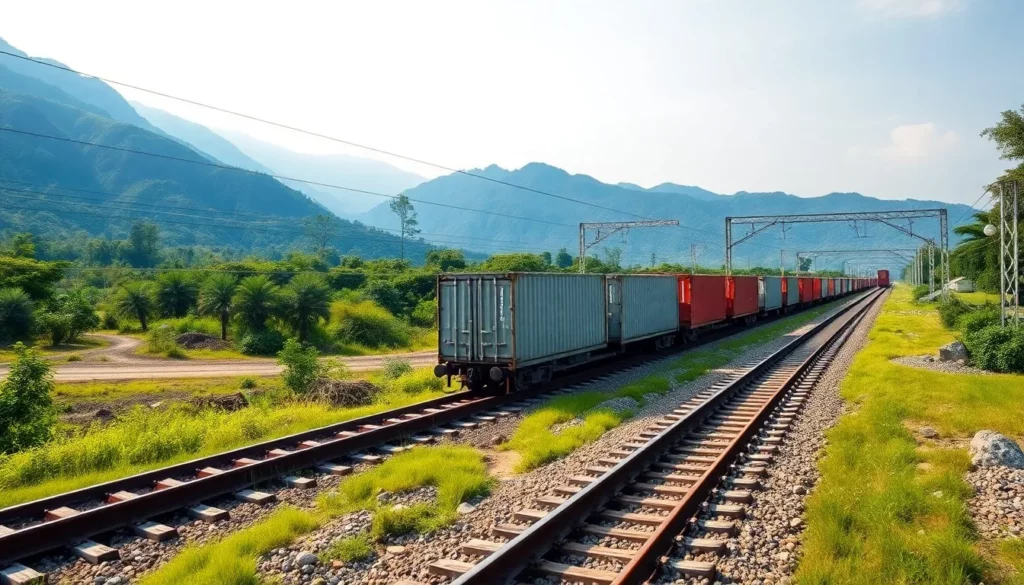
Strategic Assessment of Shipping Modes: China to Laos
Selecting the right shipping mode for the China-Laos trade lane requires you to evaluate four primary options. Each offers distinct advantages for different cargo types and business needs. Your choice directly impacts your total landed cost, transit reliability, and overall supply chain flexibility.
Rail Freight: Leveraging the New China-Laos Railway
The China-Laos Railway has fundamentally changed the logistics landscape between the two countries. In my two decades in this field, I’ve rarely seen a single infrastructure project have such a transformative impact. This modern system gives you a compelling middle-ground option that balances cost-efficiency with reasonable transit times, making it an increasingly popular alternative to traditional sea and air freight.
The railway provides direct access to Laos’s key economic centers with predictable schedules and competitive pricing. For any business looking to optimize supply chain efficiency without sacrificing reliability, the China-Laos Railway delivers a strategic advantage.
Analyzing the Core Benefits: A Balanced Option
Rail freight via the China-Laos Railway offers transit times of 3-7 days from major Chinese hubs to destinations in Laos. This is about 50% faster than sea freight while being significantly cheaper than air freight. This unique positioning makes rail an ideal choice for time-sensitive shipments where air freight costs are prohibitive. The system handles both Full Container Load (FCL) and Less than Container Load (LCL) shipments, offering flexibility for businesses of all sizes at a typical cost of $0.10-$0.50 per kilogram.
Pro Tips: Rail freight becomes increasingly cost-effective for shipments over 500 kg, where the per-unit transportation cost advantages become more pronounced compared to air freight.
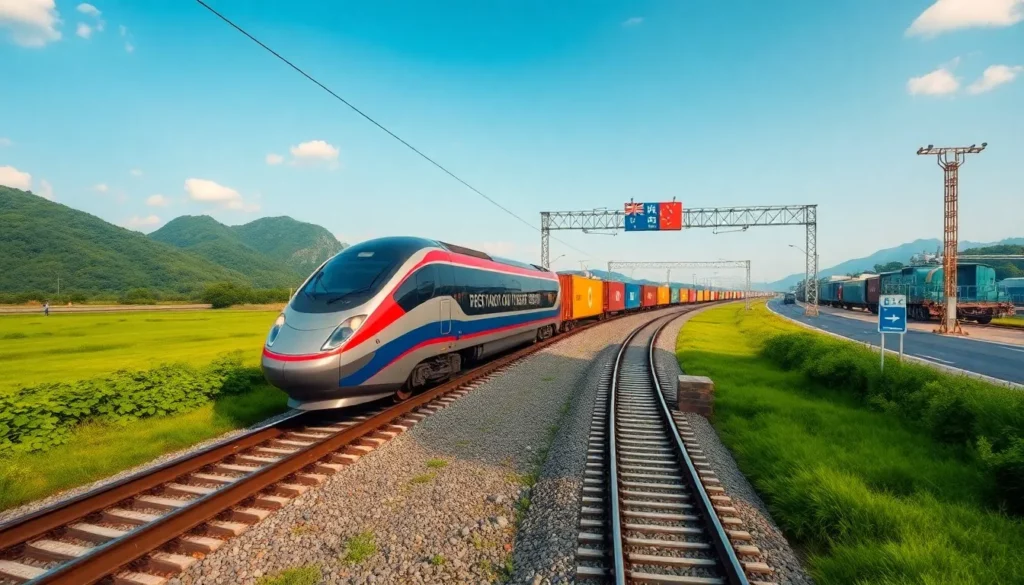
Key Railway Route: The Kunming to Vientiane “Iron Silk Road”
The China-Laos Railway spans 422.4 kilometers from Kunming in China’s Yunnan Province to Vientiane, the capital of Laos. This “Iron Silk Road” is a key part of the broader Pan-Asian Railway network and operates at a designed speed of 160 kilometers per hour. The line officially opened for commercial traffic on December 3, 2021.
The railway crosses the border at Mohan (China) and Boten (Laos), featuring a streamlined customs process that facilitates efficient cross-border trade. This direct link eliminates the need for the multiple transshipment points that characterize sea routes, reducing handling risks and associated costs.
Main Freight Hubs: Connecting China to Laos
The railway network connects several major Chinese freight hubs to three primary destinations in Laos, creating comprehensive coverage.
- Chinese Hubs: Kunming serves as the primary gateway, with Chongqing and Nanjing offering additional connectivity for central and eastern China.
- Laos Hubs: Vientiane is the main commercial destination, Nateuy serves northern Laos for distribution, and Luang Prabang provides access to tourism and cultural centers.
Best Practice: Choose your departure hub based on your supplier’s location to minimize pre-rail transportation costs and reduce the overall transit time.
Typical Cargo for Rail
The China-Laos Railway is equipped to handle a diverse range of cargo types suitable for many industries.
- Containerized goods, including electronics, textiles, and consumer products.
- Bulk shipments like agricultural products, raw materials, and industrial components.
- Heavy machinery and automotive parts that benefit from the railway’s capacity for substantial weight loads.
Emerging Opportunities: Cold Chain Logistics
A recent and exciting development on the China-Laos Railway is its advanced cold chain logistics capability. This opens new opportunities for businesses dealing with perishable and temperature-sensitive products like fresh produce or pharmaceuticals. These refrigerated container services reduce reliance on expensive air freight while maintaining product quality and freshness, a true game-changer for many importers.
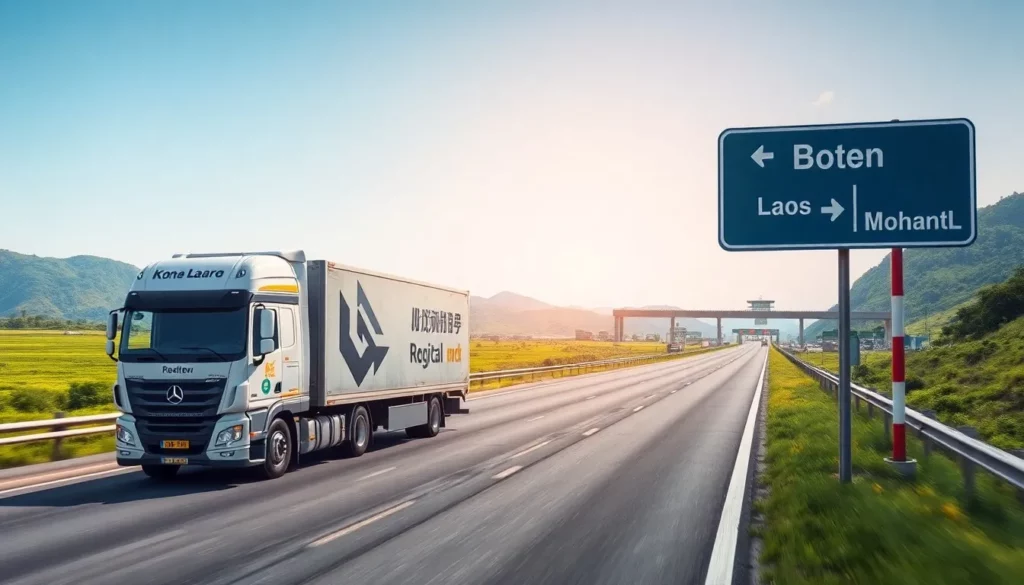
Road Freight: The Direct and Flexible Overland Route
Road freight is your most flexible option for China-Laos trade, offering true door-to-door delivery and adaptability for diverse cargo needs. This mode is perfect for situations that demand precise delivery schedules, temperature control, or access to destinations not directly served by rail or air. The well-maintained highway network and established border procedures make it a reliable choice, with typical transit times of 2-6 days.
Understanding the Primary Cross-Border Gateways
- Boten (Laos) / Mohan (China): This is the primary gateway for road freight, handling the majority of commercial traffic. It has established customs procedures and infrastructure designed for efficient clearance.
- Lantouy International Checkpoint: This serves as a useful alternative, especially for shipments from different regions of China or to avoid congestion at the main crossing.
Comparing Full Truckload (FTL) vs. Less-Than-Truckload (LTL)
| Feature | Full Truckload (FTL) | Less-Than-Truckload (LTL) |
| Best For | Cargo volumes over 13-15 CBM. | Smaller shipments under 13 CBM. |
| Service | Dedicated vehicle, direct route. | Shared vehicle, multiple stops for consolidation. |
| Speed | Faster transit times due to no extra stops. | Slower transit times due to multiple pickups/deliveries. |
| Security | Higher security with less handling. | More handling points during consolidation/deconsolidation. |
Key Metric: FTL shipping typically costs 20-30% less per cubic meter than LTL for shipments over 15 CBM, making volume consolidation a critical cost optimization strategy.
Analyzing Road Transit Times from Key Chinese Hubs
Your transit time will vary based on your supplier’s location. Proximity to the border is a major factor. Due to its closeness to the Boten/Mohan crossing, Kunming offers the shortest delivery time at around 2 days. Shipments from Shenzhen and Guangzhou typically take 2-3 days. For origins further away, like Shanghai, expect 3-4 days. Northern cities like Harbin could take up to 6 days.
When to Choose Road Freight Over Rail
Road freight can offer a clear speed advantage for certain routes. Shipments from southern China can often reach Laos in 2-3 days by truck, compared to 3-5 days by rail. This 1-2 day difference can be meaningful for time-sensitive goods. Road freight is also more cost-effective for smaller shipments under 500 kg where rail’s fixed costs are less economical. Finally, if your final destination isn’t near a railway terminal, road freight provides direct delivery, avoiding extra handling and costs.
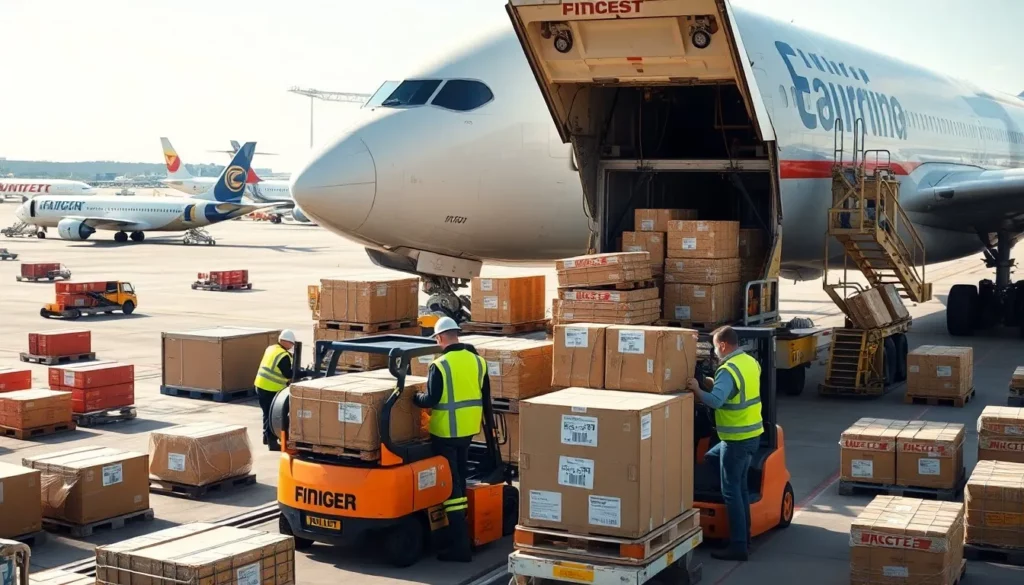
Air Freight: Prioritizing Speed for High-Value Cargo
Air freight is your premium shipping option, delivering unmatched speed and reliability for urgent or high-value cargo. With transit times of just 1-3 days, it allows you to respond rapidly to market demand and maintain a lean inventory. The route is well-serviced with multiple daily flights, suiting electronics, pharmaceuticals, and fashion items where speed justifies the higher cost.
Deciding Between Standard Air Cargo and Express Courier Services
| Service | Standard Air Cargo | Express Courier (DHL, FedEx, UPS) |
| Ideal Shipment | Over 100-150 kg. | Under 100 kg or for premium service needs. |
| Cost Per KG | $3 – $6 | $10 – $15 |
| Service Level | Reliable airport-to-airport or door-to-door. | All-inclusive door-to-door with tracking and guarantees. |
Example: For a 50 kg electronics shipment needing urgent delivery, an express courier provides end-to-end management and guaranteed delivery within 24-48 hours, eliminating coordination headaches.
Identifying Key International Airports
- Laos Airports: Wattay International Airport (VTE) in Vientiane is the primary cargo gateway, handling over 16,000 tonnes annually. Luang Prabang International Airport (LPQ) offers a secondary entry point, especially for northern Laos.
- China Airports: Shanghai Pudong (PVG), Guangzhou Baiyun (CAN), Beijing Capital (PEK), and Shenzhen Bao’an (SZX) offer the most comprehensive flight schedules and cargo capacity for shipments bound for Laos.
Calculating Air Freight Costs: Gross vs. Volumetric Weight
Your air freight cost is based on the “chargeable weight,” which is the greater of the gross weight (the actual physical weight) and the volumetric weight. This practice ensures carriers are compensated for the space your cargo occupies.
The formulas are:
- Standard Air Cargo: (Length × Width × Height in cm) / 6000
- Express Services: (Length × Width × Height in cm) / 5000
Pro Tips: Optimize your packaging to reduce its dimensions. This simple step can significantly lower your chargeable weight and final cost, especially for large, lightweight products.
Ideal Use Cases for Air Freight
- Urgent Deliveries: Replacement parts or seasonal goods that need immediate market entry.
- Perishable Goods: Fresh produce, pharmaceuticals, and other items that require minimal transit time to maintain quality.
- High-Value Items: Electronics, luxury goods, and precision instruments that benefit from enhanced security and reduced handling.
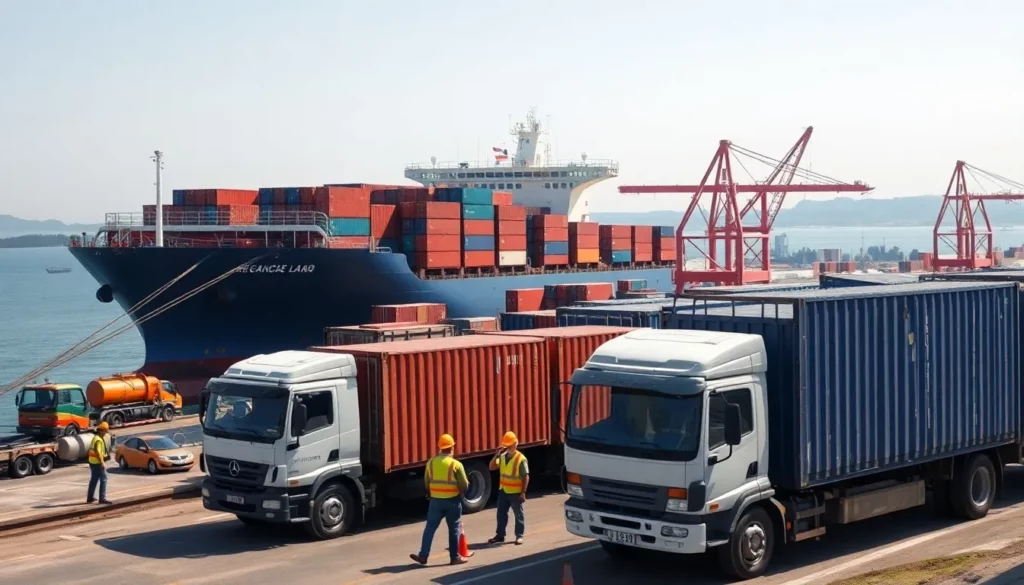
Sea Freight: The Indirect Option for Maximum Volume
Because Laos is landlocked, sea freight requires an innovative multi-modal approach. Your cargo travels by sea to a major port in a neighboring country, typically Thailand or Vietnam, and is then trucked overland to Laos. This is the most cost-effective solution for high-volume shipments where you have flexibility on the delivery schedule, with total transit times of 10-25 days.
How Landlocked Shipping Works: Using Ports in Thailand and Vietnam
Your strategy will depend on your final destination within Laos. Laem Chabang Port in Bangkok, Thailand, is a primary gateway. A typical sea journey from China takes about 4 days, followed by 2-3 days of overland trucking into Laos.
Alternatively, Haiphong Port in Vietnam is an excellent option for shipments destined for northern and eastern Laos. The sea transit from Shekou, China, is just over a day, followed by trucking across Vietnam into Laos. A common pitfall I’ve seen importers face is underestimating the complexity of this multi-modal coordination. Using an experienced freight forwarder is essential here.
Making the Critical Choice: FCL vs. LCL
| Feature | Full Container Load (FCL) | Less than Container Load (LCL) |
| Best For | Cargo volumes over 13-15 CBM. | Smaller volumes under 13-15 CBM. |
| Cost Structure | Flat rate for a 20ft ($1,800-$2,500) or 40ft ($2,000-$3,000) container. | Priced per cubic meter or per ton. |
| Process | Your goods in a dedicated, sealed container. | Your goods are consolidated with others in a shared container. |
| Handling | Less handling, lower risk of damage. | More handling during consolidation and deconsolidation. |
Best Practice: Always calculate the break-even point between LCL and FCL for your specific cargo volume. A shipment of around 13 CBM can often be cheaper in a dedicated 20ft FCL container than as LCL cargo.
Understanding the End-to-End Process
The sea freight journey starts with cargo consolidation at a Chinese port, followed by the ocean voyage to the gateway port in Thailand or Vietnam. Upon arrival, your cargo clears customs in the transit country before being loaded onto a truck for the final overland leg into Laos. This process involves navigating three different regulatory environments, making expert guidance invaluable.
Cost-Benefit Analysis: When a Long Transit Time Pays Off
Sea freight’s primary advantage is its low per-unit cost. For bulk commodities, raw materials, or non-urgent goods, the cost savings are compelling. Sea freight can be as low as $0.03-$0.10 per kilogram, delivering 60-80% savings compared to air freight. If your business has predictable demand and can manage longer lead times, you can leverage sea freight to significantly improve your profit margins.
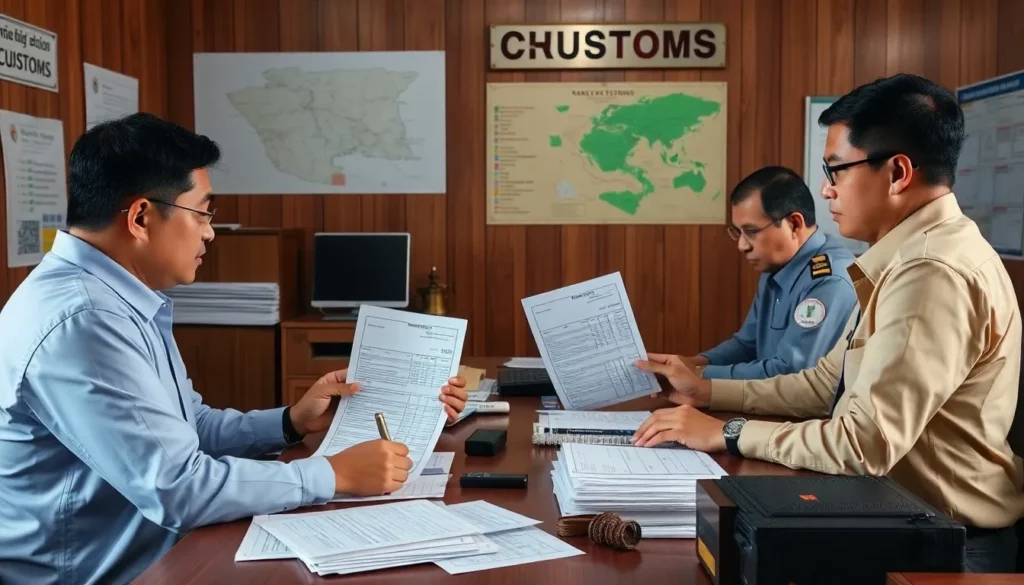
Mastering Laos Customs and Import Regulations
Navigating Laos customs effectively is about more than just paperwork; it’s a core part of your cost-saving strategy. A deep understanding of documentation, duty calculations, and free trade agreements can reduce your import duties by up to 90%. Getting this right ensures rapid clearance, while errors can lead to delays, penalties, and the loss of tariff benefits.
Essential Documentation for a Smooth Customs Process
Accurate and complete documentation is the foundation of efficient customs clearance. Missing or incorrect paperwork is the most common cause of delays and extra costs. Your documents must legitimize the transaction, declare the cargo’s contents and value, and prove eligibility for preferential tariffs.
The Commercial Invoice: Ensuring Accuracy
The commercial invoice is the primary document for customs valuation. It requires a precise description of your goods, correct pricing, and complete transaction details. Customs authorities use this to determine the dutiable value of your shipment. Any discrepancy between the invoice and other documents can trigger inspections and delays.
Critical Warning: Undervaluing goods on the commercial invoice to reduce duties is illegal. It can result in severe penalties, cargo seizure, and being blacklisted from future importing.
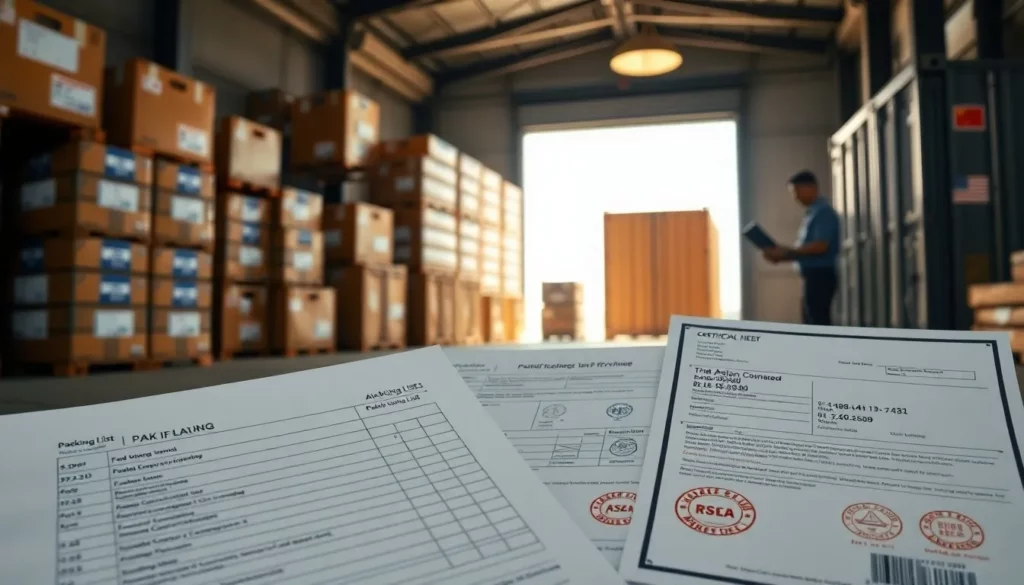
The Packing List: Detailing Your Shipment
The packing list provides a detailed breakdown of your shipment’s contents, including quantities, weights, and dimensions for each package. This document helps customs officials verify the cargo against your declaration and speeds up physical inspections if they are required. An accurate packing list demonstrates transparency and reduces clearance time.
The Bill of Lading (Sea/Rail) and Air Waybill (Air)
These documents are your contract of carriage with the transport provider. They also serve as proof of ownership, allowing your designated agent to claim the cargo upon arrival. The Bill of Lading (B/L) is used for sea and rail freight, while the Air Waybill (AWB) is used for air freight. These must accurately reflect the cargo details and identify the consignee.
The Certificate of Origin (CO): Your Key to Tariff Reduction
The Certificate of Origin is the single most important document for unlocking preferential tariff rates under free trade agreements.
- Form E: Used for the ASEAN-China Free Trade Area (ACFTA).
- Form RCEP: Used for the Regional Comprehensive Economic Partnership.
This certificate must be issued by an authorized agency in China and prove that your goods qualify under the specific rules of origin.
Best Practice: Work with your Chinese supplier to ensure the Certificate of Origin is prepared correctly before the shipment departs. Attempting to fix it after the fact is difficult and often impossible.

A Step-by-Step Guide to Calculating Landed Costs
Calculating your total landed cost accurately is fundamental to setting your prices, managing your budget, and ensuring profitability. This cost includes the product price, transportation, insurance, duties, taxes, and other local fees.
- Identify Your Product’s HS Code: The Harmonized System (HS) Code is a 6-digit international code that classifies your product. It determines the correct import duty rate. Your supplier can provide this, but you should always verify it. An incorrect HS Code is a common and costly mistake.
- Determine the Customs Value (CIF): Laos customs calculates duties based on the CIF value. This is the total of your product cost, the insurance premium, and the freight cost to bring the goods to the border. For example, if your goods cost $10,000, freight is $2,000, and insurance is $200, your customs value is $12,200.
- Apply the Correct Import Tariff Rate: Using your HS code, find the applicable tariff rate. Remember to check for the preferential rate you are entitled to with your Certificate of Origin. Standard rates can be high, but ACFTA or RCEP can reduce them to zero or a minimal level.
- Factor in VAT and Other Fees: Laos applies a standard 10% Value-Added Tax (VAT) on the CIF value plus any import duty. You must also account for other potential fees like customs processing charges or port handling fees.The formula is: (CIF Value + Import Duties) × 1.10 (for VAT) + Additional Fees = Total Landed Cost
Key Metric: Your total landed cost will typically be 15-25% above the CIF value when you successfully use a free trade agreement. Without it, that figure can easily exceed 40%.
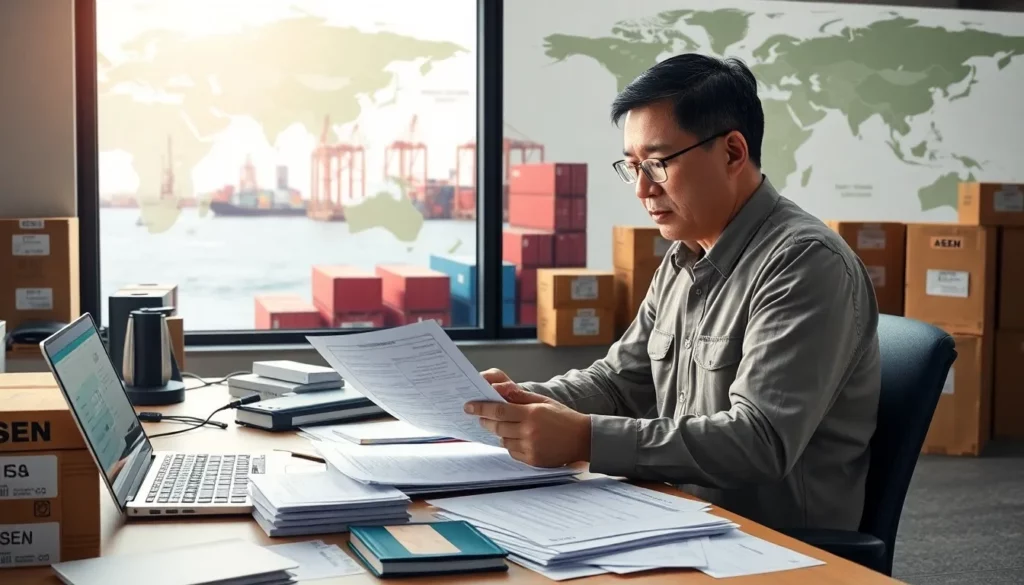
Leveraging Free Trade Agreements to Minimize Costs
Free trade agreements are your single biggest opportunity for cost reduction. By properly using ACFTA and RCEP, you can gain a significant competitive advantage. The key is strict compliance with the rules of origin and perfect documentation.
The ASEAN-China Free Trade Area (ACFTA)
ACFTA is the primary driver of tariff reduction for China-Laos trade, eliminating duties on over 90% of traded goods. To qualify, your products must meet specific local content or transformation requirements in China.
How to Properly Use Form E
Form E is the official Certificate of Origin for ACFTA. It must be completed by an authorized Chinese agency and match your shipping documents perfectly. Key elements include the correct HS Code, product descriptions, and an authorized signature. Any errors can lead to the rejection of your claim for lower duties.
Pro Tips: Request that your supplier prepares Form E early in the process. This ensures it’s ready at the time of shipping and avoids last-minute problems.
Understanding the RCEP Agreement
The Regional Comprehensive Economic Partnership (RCEP) is a newer agreement that provides another avenue for preferential tariffs. For some products, RCEP may offer even better rates than ACFTA. It uses a different Certificate of Origin, Form RCEP, and has its own set of origin rules. It’s always wise to compare the benefits of both agreements for your specific products.
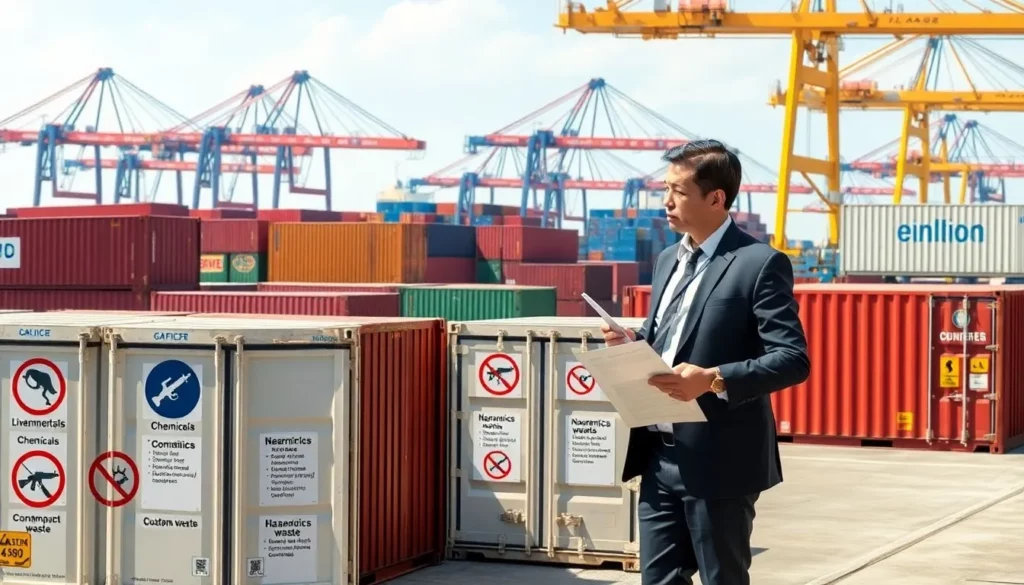
Navigating Prohibited and Restricted Goods
Understanding what you can and cannot import into Laos is critical. Attempting to import prohibited or restricted items without the proper authorization can lead to cargo seizure, fines, and legal trouble.
Identifying Goods Requiring Special Permits
Certain products require special import permits before they can be shipped. This process can take weeks or even months, so you must plan ahead.
- Pharmaceuticals
- Live animals
- Certain chemicals
- Weapons and ammunition
Understanding Strictly Prohibited Products
Some goods are strictly forbidden from being imported into Laos under any circumstances.
- Narcotics and illegal drugs
- Counterfeit goods
- Pornographic materials
- Hazardous waste
The Role of a Customs Broker
In my experience, a professional customs broker is an invaluable partner. They provide specialized knowledge of Laos’s regulations, manage permit applications, and handle all customs declarations. Their expertise ensures compliance and helps you avoid costly penalties and delays, more than justifying their fee.
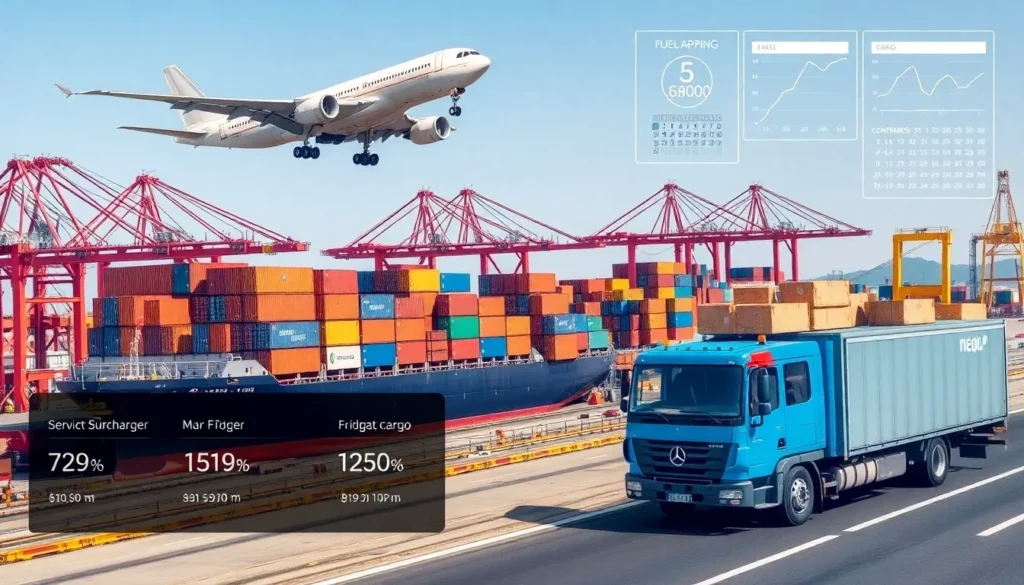
Framework for Optimizing Shipping Costs and Transit Times
An effective shipping strategy requires you to balance cost, speed, and reliability. By analyzing all the variables that influence your total shipping quote and transit time, you can create a framework that gives your business a competitive edge.
Key Factors Influencing Your Total Shipping Quotation
Your shipping quote is a complex calculation. Understanding its components allows you to budget more accurately and negotiate better terms with your logistics provider.
How Cargo Characteristics Impact Pricing
Your cargo’s type, weight, and dimensions are fundamental to pricing. Weight is a factor in all modes, but for air freight, the chargeable weight (actual vs. volumetric) is key. Oversized or fragile cargo may require special handling and equipment, which adds to the cost. The value of your cargo will also influence your insurance requirements.
The Role of Fuel Surcharges and Peak Season Rates
Fuel surcharges are a variable cost component that can add 10-30% to your base freight rate. They fluctuate with global energy prices. Additionally, be aware of peak season rates. These typically apply from November to February for air freight and June to August for sea freight, potentially increasing costs by 15-25%.
Key Metric: Fuel surcharges and peak season premiums combined can add 20-50% to your base shipping rates. You must account for this in your budget.
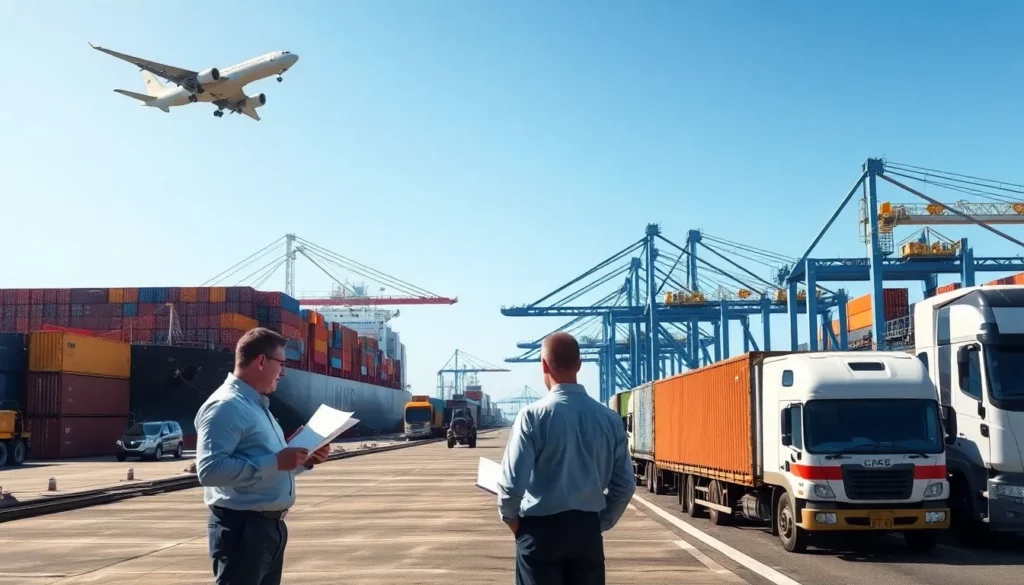
Comparing Terminal Handling, Customs Brokerage, and Last-Mile Fees
Your shipping quote has several parts. Terminal handling charges ($100-$300 per shipment) cover processing at the port or airport. Customs brokerage fees ($150-$500 per shipment) cover professional clearance services. Finally, last-mile delivery fees cover the final transport to your warehouse and vary based on destination accessibility.
Holistic Transit Time Comparison: Door-to-Door
You need to analyze the entire door-to-door transit time, not just the time on the vessel or aircraft. This includes pickup, customs clearance, and final delivery, which can add 2-5 days to the pure transportation time.
- Air Freight: Expect 1-5 days for door-to-door delivery.
- Road & Rail Freight: Expect 2-7 days for most overland routes.
- Sea Freight: Expect 10-25 days, including the ocean and overland legs.
Common Causes of Delays
The most common and preventable cause of delays is documentation errors, which can add 2-5 days to your transit time. Other frequent causes include random customs inspections (adding 1-3 days) and port congestion during peak seasons, which primarily affects sea freight.
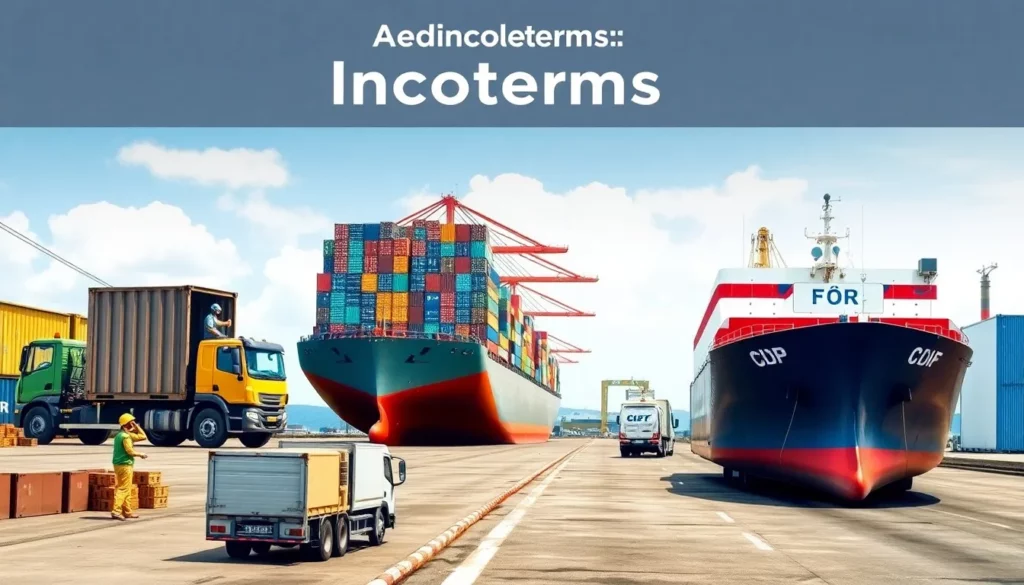
Understanding and Choosing the Right Incoterms
Incoterms define the responsibilities of the buyer and seller. Choosing the right one is a strategic decision that impacts your cost, control, and risk. A common mistake importers make is not fully understanding these terms before agreeing to a purchase.
| Incoterm | Buyer’s Responsibility | Seller’s Responsibility | Best For |
| EXW (Ex Works) | All logistics from factory door, including export customs. | Make goods available at their factory. | Experienced importers wanting maximum control. |
| FOB (Free On Board) | International transport, insurance, import customs, final delivery. | Local transport to the port/terminal, export customs clearance. | Importers wanting to control international freight costs. |
| CIF (Cost, Insurance, Freight) | Import customs, duties, and final delivery from the transit port. | All logistics up to the destination port (e.g., Bangkok). | Importers wanting predictable costs with less logistics management. |
| DDP (Delivered Duty Paid) | Unloading at the final destination. | Everything: transport, customs, duties, and final delivery. | First-time importers or those wanting maximum convenience. |
Best Practice: FOB is often the best balance of cost and control for most importers. It allows you to choose your own freight forwarder and control the main international shipping leg. DDP is convenient but can be more expensive, as the seller builds a margin into the logistics costs they manage.

Selecting Your Freight Forwarding Partner
Your choice of freight forwarder is one of the most critical decisions you will make. This partner is your link between suppliers, carriers, and customs. Their performance directly impacts your cost-efficiency, reliability, and peace of mind.
Core Capabilities to Evaluate in a Logistics Provider
Verifying Expertise on the China-Laos Trade Route
General forwarding experience isn’t enough. You need a partner with specific, proven expertise on the China-Laos lane. They will understand the nuances of the border crossings, the China-Laos Railway, and the local customs regulations.
Best Practice: Ask for case studies or references from other businesses they have helped on this specific trade lane. This is the best proof of their capability.
Assessing Network Strength in Both China and Laos
A strong network with their own offices or trusted agents in both countries is non-negotiable. This ensures seamless coordination, from supplier pickup in China to final delivery in Laos, and allows for effective problem-solving on the ground.
Evaluating Tracking Systems for Real-Time Visibility
Your forwarder should provide a modern tracking system that offers real-time visibility of your shipment. This enables you to manage your inventory proactively and keep your own customers informed. Look for features like milestone alerts and a user-friendly online portal.
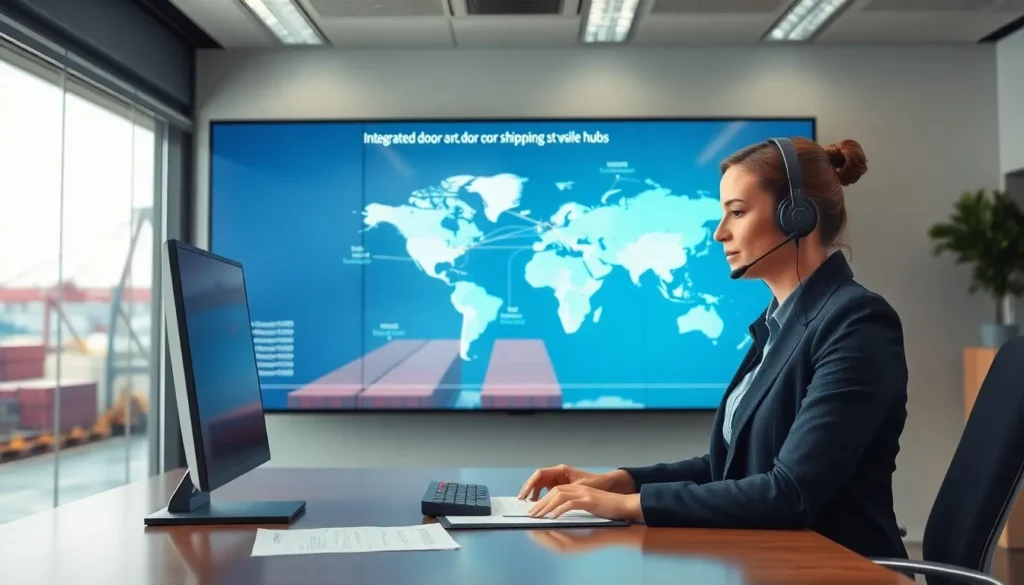
Judging Communication and Customer Service
Responsive customer service is critical. When issues arise, you need a partner who communicates proactively and clearly. Evaluate their response times, language capabilities, and whether you will have a single, dedicated point of contact.
The Strategic Advantage of Integrated Door-to-Door Shipping
Using a single forwarder for an integrated door-to-door service simplifies the entire process. It provides a single point of contact and accountability, reduces the risk of errors, and often results in cost and time savings. By minimizing the number of handovers between different companies, you also reduce the risk of damage or loss.
Evaluating Value-Added Services
Look for a partner who can offer more than just basic freight.
- Cargo Insurance: A good forwarder can offer comprehensive cargo insurance. Critical Warning: Basic carrier liability offers very limited coverage. It is never enough for valuable commercial shipments.
- Warehousing & Consolidation: Services in major Chinese hubs allow you to consolidate goods from multiple suppliers into a single, more cost-effective shipment.
- Specialized Cargo Handling: If you ship perishable (reefer), oversized (OOG), or wheeled (Ro-Ro) cargo, ensure your partner has proven expertise in these areas.
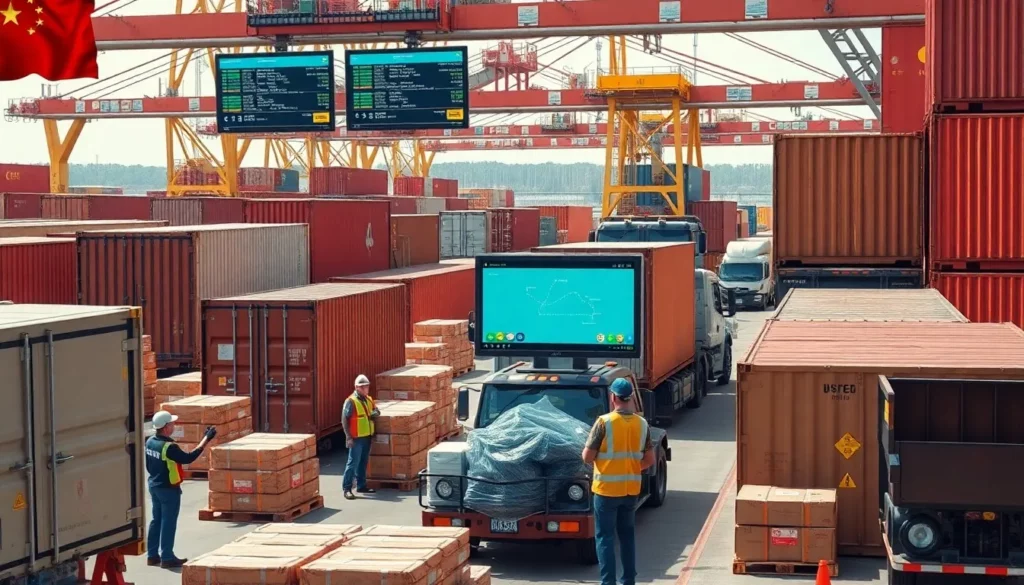
Step-by-Step Guide: Executing Your China-to-Laos Shipment
Follow this structured four-step process to ensure your shipment is executed flawlessly from start to finish.
Step 1: Pre-Shipment Strategy and Partner Selection
- Define Your Needs: Clearly outline your cargo volume, budget constraints, and required delivery timeline.
- Select the Optimal Incoterm: Choose the Incoterm (e.g., FOB, DDP) that best fits your desired level of control, risk, and logistics expertise.
- Choose Your Freight Forwarder: Select a partner with proven, specific expertise on the China-Laos trade lane.
- Compare All-Inclusive Quotes: Obtain and compare detailed shipping quotes. Make sure they are “all-in” to avoid surprise fees later.
Step 2: Documentation and Cargo Preparation
- Ensure Proper Packaging: Work with your supplier to ensure goods are correctly packaged and labeled for export to withstand the rigors of transit.
- Compile and Verify Documents: Gather and cross-check the Commercial Invoice, Packing List, and Bill of Lading/Air Waybill for accuracy and consistency.
- Secure the Certificate of Origin: Confirm that the correct Certificate of Origin (Form E or Form RCEP) has been secured to guarantee your tariff reductions.
Pro Tips: Ask your supplier for multiple original copies of the Certificate of Origin. This provides a backup in case one is lost or damaged in transit.
Step 3: Freight Transit and Customs Clearance
- Coordinate Pickup and Export: Your forwarder manages the cargo pickup from your supplier and handles all export customs clearance procedures in China.
- Track Your Shipment: Use your forwarder’s tracking system to monitor your shipment’s progress from the origin hub to the Laos border or terminal.
- Manage Import Clearance: Your forwarder’s team in Laos will manage the import customs clearance, submitting all documents and handling duty and tax payments on your behalf.
Step 4: Final Delivery and Post-Shipment Review
- Arrange Last-Mile Delivery: Your forwarder coordinates the final delivery from the terminal or border crossing to your warehouse or specified address.
- Inspect Your Goods: Upon arrival, immediately inspect your cargo for quantity and condition. Document any damage or discrepancies with photos before signing the delivery receipt.
- Settle Invoices and Keep Records: Settle all final invoices with your forwarder and maintain a complete record of all shipping documents for future reference and auditing.
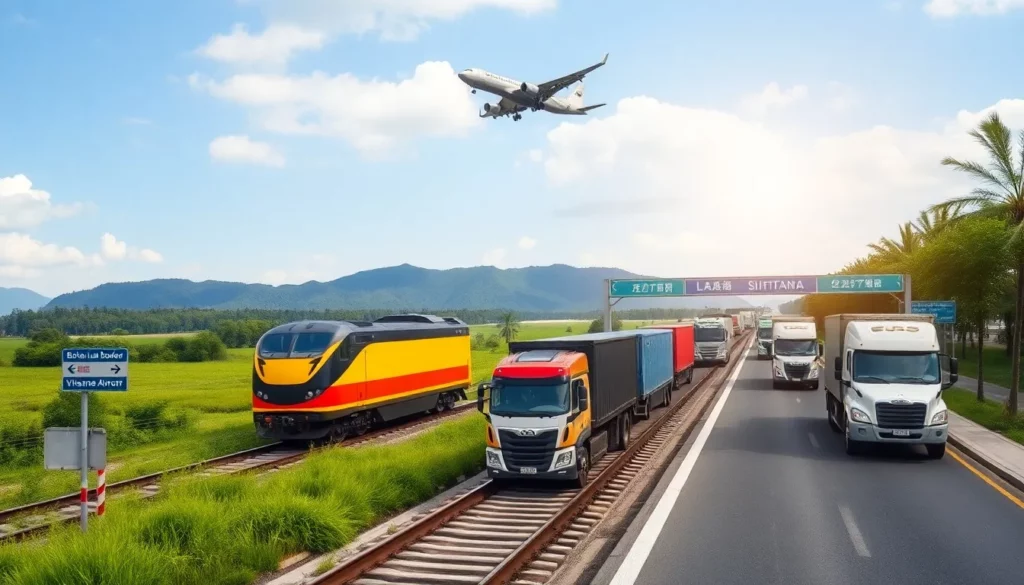
Conclusion
A successful China-to-Laos shipping strategy hinges on matching the right transport mode—balanced rail, flexible road, or fast air—to your specific needs. Your greatest cost-saving tool is the meticulous use of free trade agreements like ACFTA through proper documentation. This expert approach transforms a complex, multi-modal journey into a streamlined and predictable supply chain.
AIIDII’s specialized expertise in this exact trade lane de-risks the entire process. Contact us today for a personalized consultation to design a logistics solution that ensures compliance, reliability, and cost-efficiency for your business.
Frequently Asked Questions (FAQs)
1. What is the railway’s biggest advantage over road freight for importers?
The China-Laos Railway’s main advantage is its blend of speed and cost, offering transit times (3-5 days) that are nearly 50% faster than sea freight but significantly cheaper than air. It also provides predictable scheduling and enhanced cargo security in sealed containers, which helps with inventory planning.
2. How exactly does Form E reduce my landed cost?
Form E is your key to preferential tariffs under the ASEAN-China Free Trade Agreement (ACFTA), which can cut import duties by up to 90%. For a $10,000 shipment with a standard 15% duty ($1,500), a preferential rate of 1% would reduce that duty to just $100, directly saving you $1,400.
3. For a small 2.5 CBM shipment, should I use LCL sea or LTL road?
This choice depends entirely on your priority. LTL road freight is much faster (2-6 days) and simpler. LCL sea freight (10-25 days) is significantly cheaper but more complex due to the transit through Thailand or Vietnam. If speed is important, choose road; if cost is the absolute priority, choose sea.
4. How do customs procedures differ at the Boten land border vs. VTE airport?
Both entry points require the same core documents, but the process is slightly different. The Boten land border is designed for high-volume truck and rail cargo and can take 4-8 hours to clear. Vientiane’s airport (VTE) has expedited air cargo procedures, often clearing goods in 2-4 hours, but requires an Air Waybill instead of a Bill of Lading.
5. Why is DDP Incoterm recommended for first-time importers to Laos?
DDP (Delivered Duty Paid) is recommended for beginners because it offers maximum simplicity and predictable pricing. The seller handles all logistics, customs, and duties. This convenience comes at a price, as the seller’s final cost will include a markup on these services, but it eliminates risk for an inexperienced importer.

